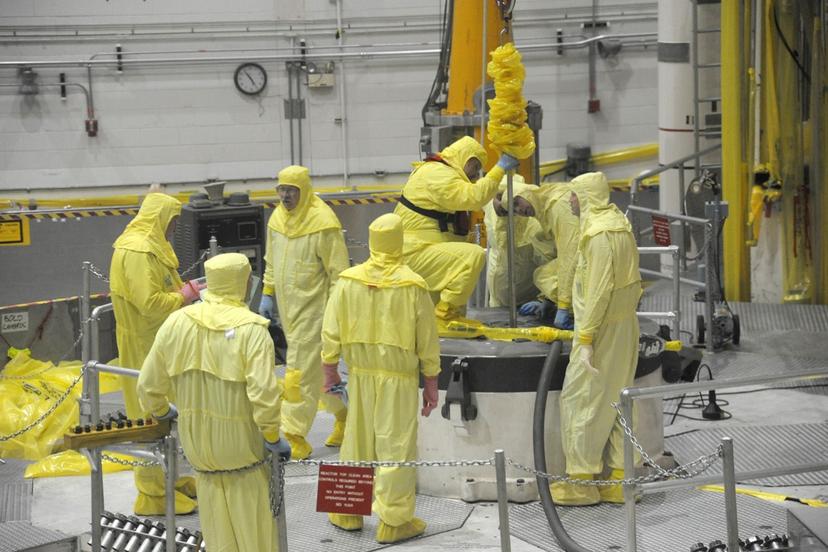Nuclear Power

Background
In 1942, Enrico Fermi produced the first self-sustained nuclear chain reaction with the first demonstration reactor, the Chicago Pile 1. Fermi's work was part of the U.S. government's research project, code-named the Manhattan Project, which resulted in the world's first atomic bomb. Research and experimentation further refined the method by which nuclear fission is produced. By July 16, 1945, scientists had developed a way for fissionable material to create such rapid and immense chain reactions that a nuclear explosion would result. In August 1945, World War II came to an end after atomic bombs destroyed the Japanese cities of Hiroshima and Nagasaki.
After the atomic bomb was developed, the focus of nuclear engineering shifted to nonviolent uses for nuclear energy. In December 1951, an experimental reactor produced the first electric power from the atom, lighting four lightbulbs. In 1954, Congress passed legislation aimed at encouraging private industry to build nuclear reactors and to use reactor-produced electricity. In 1955, Arco, Idaho, became the first U.S. town to be entirely powered by nuclear energy.
During the early 1960s, several demonstration nuclear power plants for the commercial production of electrical power went into operation in the United States. By the late 1960s, electric utilities, perceiving nuclear power as economically attractive, began to order large numbers of nuclear power plants.
The cost of power from nuclear plants increased rapidly through the early 1970s, because of rising construction costs, high interest rates, and construction delays caused by licensing procedures and environmental lawsuits. By the late 1970s, few orders were being placed for nuclear power plants. A handful of notable nuclear accidents also dampened the growth of the nuclear energy industry.
In May 1979, a major accident occurred in a pressurized-water nuclear reactor at the Three Mile Island nuclear power plant near Harrisburg, Pennsylvania. There were no casualties, but residents in the area were exposed to radiation by a leakage of radioactive contaminants. The reactor was left crippled, and lengthy and expensive cleanup operations were required. In 1986, a major accident at a nuclear power plant in Chernobyl, Ukraine, resulted in the release of a dangerous amount of radioactive material, causing a number of deaths and contaminating a large area. A 9.0 earthquake and resultant tsunami in Japan caused major damage to the Fukushima Nuclear Power Plant in 2011, causing the facility to be closed permanently. In 2013, radiation levels around the Fukushima facility reached two-year highs and raised questions about the facility's owners and their ability to undertake the cleanup, which was expected to take decades. These types of accidents continue to raise public concern over the safety of nuclear reactors.
According to the Nuclear Energy Institute, there are 96 nuclear power reactors operating in the 29 U.S. states, supplying nearly 20 percent of the country's electricity. Nuclear energy provides more than 55 percent of the clean energy in America, and the operation of a nuclear reactor generates an average of 700 permanent jobs.
